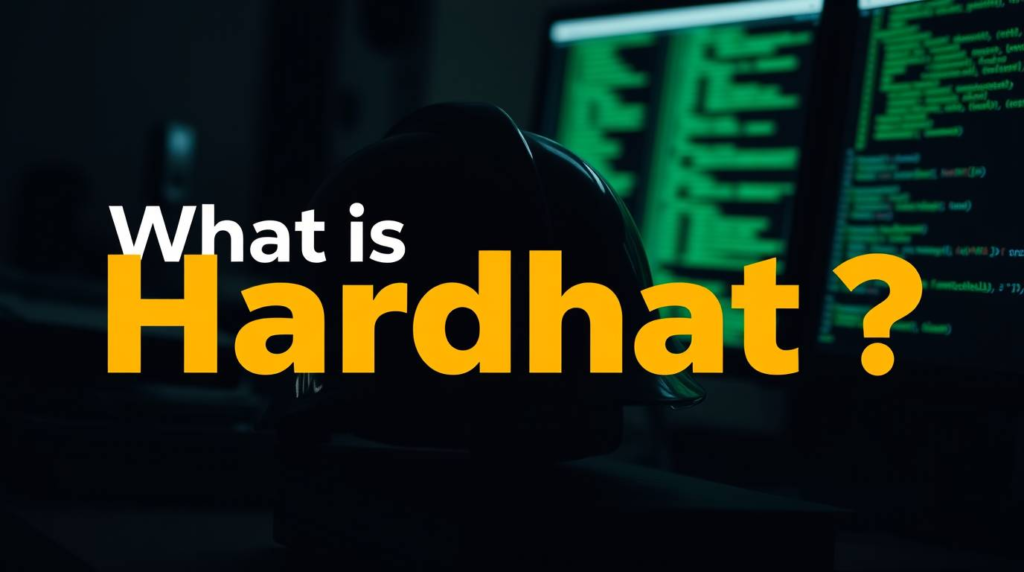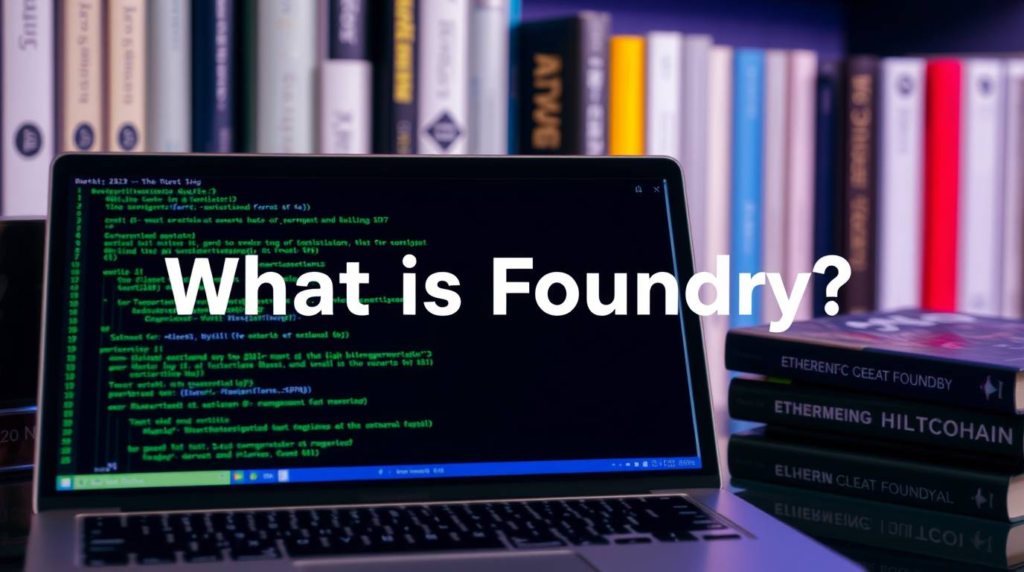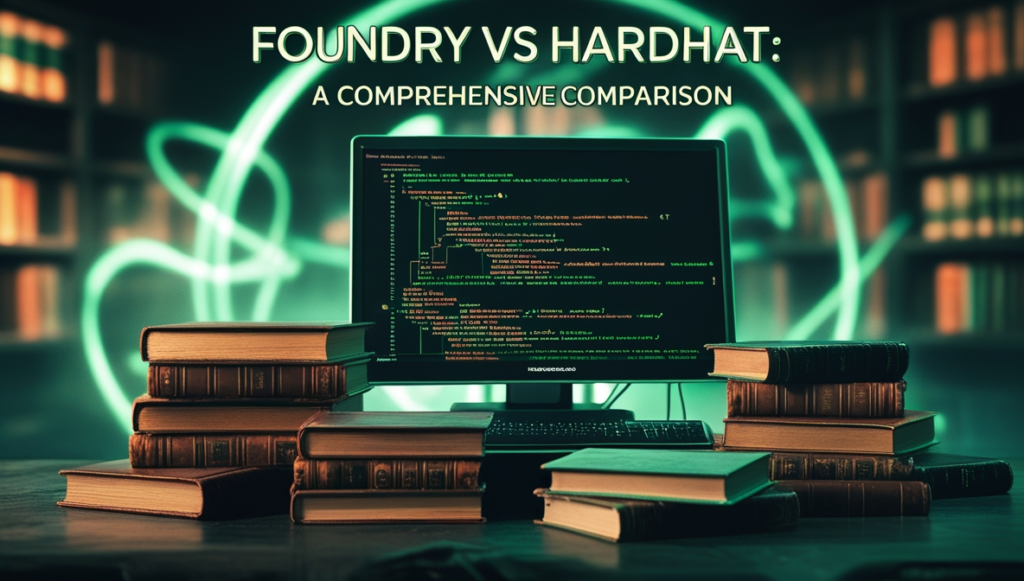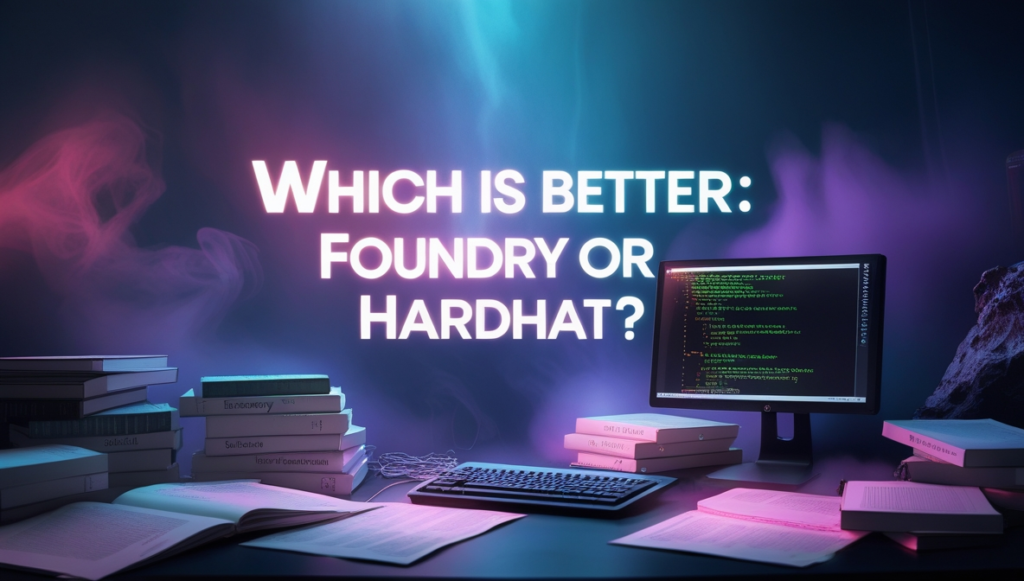Foundry vs Hardhat : As a blockchain developer or someone diving into the world of Web3, you’ve likely stumbled upon two popular tools—Foundry and Hardhat. Both are powerful frameworks designed to simplify and enhance the smart contract development process. But which one is better? This guide explores Foundry and Hardhat in depth, compares their features, and helps you make an informed decision. Whether you’re a beginner or an experienced developer, this article breaks it all down in a casual, easy-to-understand way.
Table of Contents
What Is Hardhat?

Hardhat is a development environment made especially for developers of smart contracts and Ethereum. It helps you compile, deploy, test, and debug Ethereum smart contracts easily. Created by Nomic Labs, Hardhat provides a developer-friendly environment and integrates with popular tools like Ethers.js and Waffle.
Key Features of Hardhat
- Smart Contract Compilation: Supports Solidity and generates ABI files for seamless interaction.
- Testing Framework: Write tests in JavaScript, TypeScript, or Solidity.
- Customizable Plugins: Extend functionality with community-developed plugins.
- Console: An interactive REPL environment to test smart contracts.
- Mainnet Forking: Test on a local blockchain that simulates real-world Ethereum states.
What Is Foundry?

Foundry is a newer blockchain development framework with a focus on speed and performance. Developed by Paradigm, it provides tools to write, test, and deploy smart contracts. Foundry’s lightweight and blazing-fast approach makes it a rising star in the blockchain ecosystem.
Key Features of Foundry
- High-Performance Testing: Offers ultra-fast Solidity testing.
- Scripting with Solidity: Use Solidity directly for scripting deployments.
- Built-in Debugger: Tracks execution flow and helps identify issues.
- Minimal Dependencies: Lightweight with fewer external tools required.
- Multi-chain Support: Works seamlessly with multiple blockchains, not just Ethereum.
Foundry vs Hardhat: A Comprehensive Comparison

Let’s break down Foundry and Hardhat to see how they stack up in different areas:
1. Ease of Use
- Hardhat: Extremely beginner-friendly. Its interactive console and rich plugin ecosystem make onboarding easier for new developers.
- Foundry: Slightly steeper learning curve, especially for beginners. However, experienced developers appreciate its minimalistic design and direct integration with Solidity.
2. Performance
- Hardhat: While performant, it’s not as fast as Foundry when running tests or scripts.
- Foundry: Known for lightning-fast execution, especially for testing large smart contracts. This makes it ideal for performance-driven projects.
3. Testing
- Hardhat: Supports tests in JavaScript, TypeScript, and Solidity. Its versatility is a big plus for developers who prefer traditional languages.
- Foundry: Focuses exclusively on Solidity for testing, which might feel restrictive to some but ensures tests run at top speed.
4. Plugin Ecosystem
- Hardhat: Boasts a robust plugin ecosystem. Popular plugins like Ethers.js, Waffle, and OpenZeppelin can be easily integrated.
- Foundry: Limited plugins but provides most functionality out of the box. It’s designed to do more with less.
5. Debugging and Error Handling
- Hardhat: Includes a built-in debugger that integrates with its console.
- Foundry: Offers a built-in debugger but lacks the interactive console experience of Hardhat.
6. Community and Support
- Hardhat: Larger community with active forums and discussions. Questions on platforms like “Foundry vs Hardhat Reddit” often lean towards Hardhat for support.
- Foundry: Smaller but growing community, especially among performance-focused developers.
Use Cases for Foundry
Foundry excels in scenarios where performance is critical and the project requires rapid testing and deployment. Here are some examples:
- DeFi Protocols: High-speed testing ensures quick iteration for smart contracts handling financial transactions.
- Advanced Smart Contracts: Foundry’s Solidity scripting simplifies deploying complex contracts.
- Multi-Chain Deployments: Foundry’s compatibility with multiple blockchains makes it suitable for projects expanding beyond Ethereum.
Foundry Keywords in Action
- Foundry Solidity is designed to work seamlessly with native Solidity scripts.
- Foundry blockchain enables high-performance testing on Ethereum and other blockchains.
- Foundry smart contract tools provide developers with fast and efficient debugging.
Use Cases for Hardhat
Hardhat’s user-friendly approach and plugin ecosystem make it a favorite for developers starting with blockchain development or working on simpler projects.
- Educational Projects: Beginner-friendly tools make it perfect for learning smart contract development.
- Prototyping: Its flexibility allows for quick prototyping of Ethereum applications.
- Collaborative Development: Plugins like Ethers.js and Truffle integrate seamlessly, making teamwork a breeze.
Hardhat Keywords in Action
- What is Hardhat in blockchain? Hardhat is a versatile tool for Ethereum development.
- Hardhat-Foundry projects often combine the best features of both tools.
- How to use Foundry with Hardhat? Integrate Foundry’s testing capabilities with Hardhat’s plugins for maximum efficiency.
Foundry vs Hardhat
While Foundry and Hardhat dominate the scene, Truffle remains another competitor in the blockchain development space. Here’s how it compares:
- Foundry: Superior for testing and performance-intensive tasks.
- Hardhat: Ideal for versatile and plugin-heavy projects.
Which Is Better: Foundry or Hardhat?

Choosing between Foundry and Hardhat depends on your project requirements:
- Choose Foundry if you prioritize speed, performance, and direct integration with Solidity.
- Choose Hardhat if you need flexibility, an interactive console, and a wide plugin ecosystem.
For beginners, starting with Hardhat might be easier. As you grow more comfortable, exploring Foundry’s advanced features can enhance your development workflow.
FAQs
1. What is the difference between Hardhat and Foundry?
Hardhat focuses on user-friendly features and plugins, while Foundry prioritizes performance and minimalism.
2. What is Foundry in blockchain?
Foundry is a high-performance framework for smart contract development and testing, built for speed and efficiency.
3. How to use Foundry with Hardhat?
You can use Foundry’s testing capabilities alongside Hardhat’s plugins for a hybrid development approach.
4. Should I use Hardhat or Foundry?
Use Hardhat for flexibility and ease of use. Use Foundry for speed and performance-critical projects.
5. What is Hardhat used for?
Hardhat is used for compiling, testing, debugging, and deploying Ethereum smart contracts.
6. Which is better, Hardhat or Truffle?
Hardhat offers better flexibility and features than Truffle, especially for modern Ethereum projects.
Conclusion
Foundry and Hardhat are both excellent tools, each catering to different needs in blockchain development. While Hardhat shines in versatility and ease of use, Foundry’s speed and efficiency are unmatched for performance-focused developers. By understanding their strengths and limitations, you can choose the framework that aligns best with your project’s goals.
Whether you’re exploring Foundry vs Hardhat which is better, or diving into Foundry Solidity for your next big project, this article should help you make an informed decision. Remember, the best tool is the one that fits your workflow and project requirements. Happy coding!


